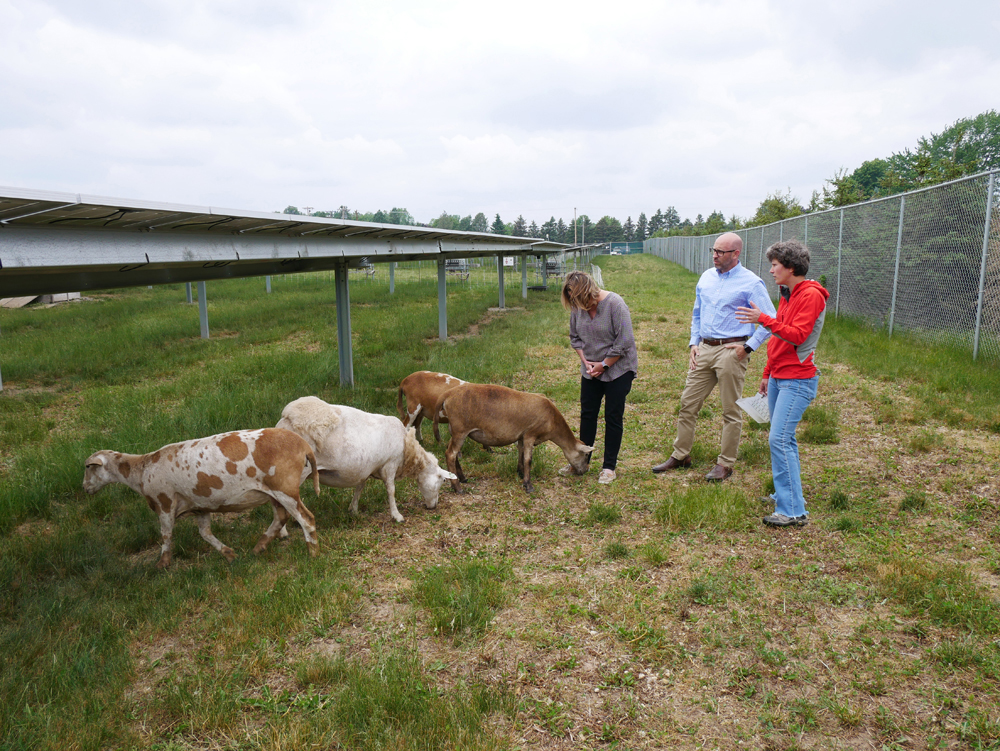Brook Field at Clarkson project reviews continue
The Brook Field at Clarkson development proposed for the southwest corner of Routes 104 and 260 in the Town of Clarkson continues to make its way through the approval process.
During their regular meeting September 23, members of the Clarkson Town Board authorized referral of the project to the town Conservation Board.
Clarkson Supervisor Paul Kimball says he expects the Town Board will vote on incentive zoning for the project later this fall and if approved, the plan will work its way through the Planning Board process.
The modern mixed-use residential/commercial Hamlet project has raised concerns from some residents because of its size – more than 300 units are proposed including 18 duplex homes; 4 – 16 unit two-story apartment buildings; 5 – 26 unit three-story apartment buildings; an 89-unit independent senior living facility; a community center and mixed retail space on Ridge Road, which will utilize streetscape designs called for in the Hamlet description of the Clarkson Comprehensive Plan.
Clarkson resident Cheryl Beardslee says she has many concerns including how such a large project would change the very nature of the town. “If you do that (build Brook Field) then it’s not Clarkson anymore.”
Beardslee says she worries about the high turnover of residents in rental housing and recently visited a development in Greece which she says has become run-down.
She also is concerned about issues like increased traffic in an already busy area and the impact more students would have on the Brockport school district.
Beardslee says she fears the town will turn a deaf ear to the concerns of residents. “Whatever Clarkson wants to do, Clarkson does,” she says. “I would encourage everybody in town who doesn’t want to see change to contact (town leaders) with a phone call, or write a letter. They need to do something.
“I’m not sure what their vision is,” Beardslee says of Town Board members, but she says she would like to “leave Clarkson the way Clarkson is.”
Another resident who lives adjacent to the proposed development says the Brook Field project will alter the small town, country feel of Clarkson.
“I’ve been to the board over and over,” she says and wishes the community could vote on the proposal. “The whole thing is about money,” she feels.
In a letter to the Suburban News/Hamlin-Clarkson Herald, she sites increased traffic and traffic congestion along Routes 260 (Sweden Walker Road) and 104 (Ridge Road), particularly at rush hours; sewer run-off, and questions if there is truly a need for more apartments and retail space in the town when current apartments have vacancies and existing store fronts are empty.
Also of concern, she says, is if the development does fill up with families and the large potential increase in student numbers for the Brockport school district.
Supervisor Paul Kimball says he feels residents tend to get lost in the size of the Brook Field proposal and don’t consider alternative developments which could be built there. He says the site – located at the eastern border of the town – is a prime location for development. He asks residents to consider possible alternatives to a Brook Field, such as the construction of 65 single-family homes, which he says would not benefit the town as the proposed development would.
If a development of single-family homes was constructed, “you would see into the backyards along Sweden Walker Road and East Avenue, there would be no sense of community whatsoever,” he says.
The Brook Field at Clarkson proposal fits with the Hamlet zoning called for in the town’s Comprehensive Plan, Kimball says.
“It’s an upscale project that would bring services to the corners,” he notes.
The duplexes would be staggered along Sweden Walker Road and the backs of the buildings would be designed with porches to appear like the front of the homes.
The proposed project includes all service and maintenance to be performed privately – removing the burden of roadways, utilities, storm water and sanitary sewers off the town, Kimball and developers say. Developers say the project would be served by private waste hauling and street maintenance/plowing. They consider existing police and fire services to be adequate.
The tax base created after the project is fully developed is expected to be $20 million, Kimball says, and calculates that $70,000 in property taxes would be collected annually – once the project is complete and fully on the tax rolls. Those tax dollars would come with no responsibilities to the town for services which are being provided privately, Kimball notes. “It’s almost a gift,” he says.
If a 65-unit single-family home development went on the site – he estimates $35,000 in property taxes annually with the need to provide town services.
A sewer line is in place through the property running from the mobile home park to homes on Sweden Walker Road and Kimball says the town engineer has stated it is sufficient for the development. Documents regarding the project on the town’s website indicate a 6” water line is located on the west side of the right-of-way on Sweden Walker Road and should meet required flows and pressures as well as provide fire protection.
Kimball says he feels the development – with rents in the $1250-$1300 range – will not be a draw for families, but will likely attract 30-somethings. He calculates school taxes at full build to be $500,000 per year. If a 65-unit single-family home development went in – which he says would attract young families with school-age children – he estimates $250,000 in school taxes might be generated.
The proposed incentive zoning for the project “gets things we want and we give concessions,” Kimball says.
If the project is approved, developers will immediately pay the town $375,000 up front – money Kimball says must be used by the town for capital improvements. The town would also receive $160,000 for its green acres trust for parks and an estimated $160,000 in building permit fees.
Kimball explains that the $375,000 payment compensates for tax incentives which are part of the plan. After two years of construction during which there are no property taxes, taxes are phased-in starting at 50 percent and then increased five percent each year until they are at 100 percent after ten years, Kimball says. “You can look at it as we receive all those taxes upfront,” he explains.
In regards to increased traffic the development would bring, Kimball says studies have shown minimal impact is expected.
A traffic impact study completed by Bergmann Associates focused on the intersections of Route 260 and East Avenue and Routes 260 and 104. The conclusion was that the impact of the development was expected to be “minor.” At the Routes 260/104 intersection, the overall increase in delay during the AM peak hour is predicted to be 3.1 seconds, during the PM peak hour, the increase in delay is estimated to be 2.6 seconds. At the Route 260 and East Avenue intersection, the AM peak hour increase in delay is expected to be 5.7 seconds and the PM peak hour increase is expected to be 6.5 seconds, according to the report which is posted on the town’s website.
The New York State DOT and Monroe County DOT have both reviewed the study. The Monroe County DOT concluded it did not feel, “… the project will have a significant impact on the adjacent highway network.”
On July 23, the Town Board held a public hearing on the incentive zoning, which is crucial to the approval of the project. Supervisor Kimball says that hearing remains open and residents will be reminded of the opportunity to comment before the Town Board votes.
If the incentive zoning is approved by the Town Board, all of the normal Planning Board procedures would then be followed including additional public hearings, Kimball says.




